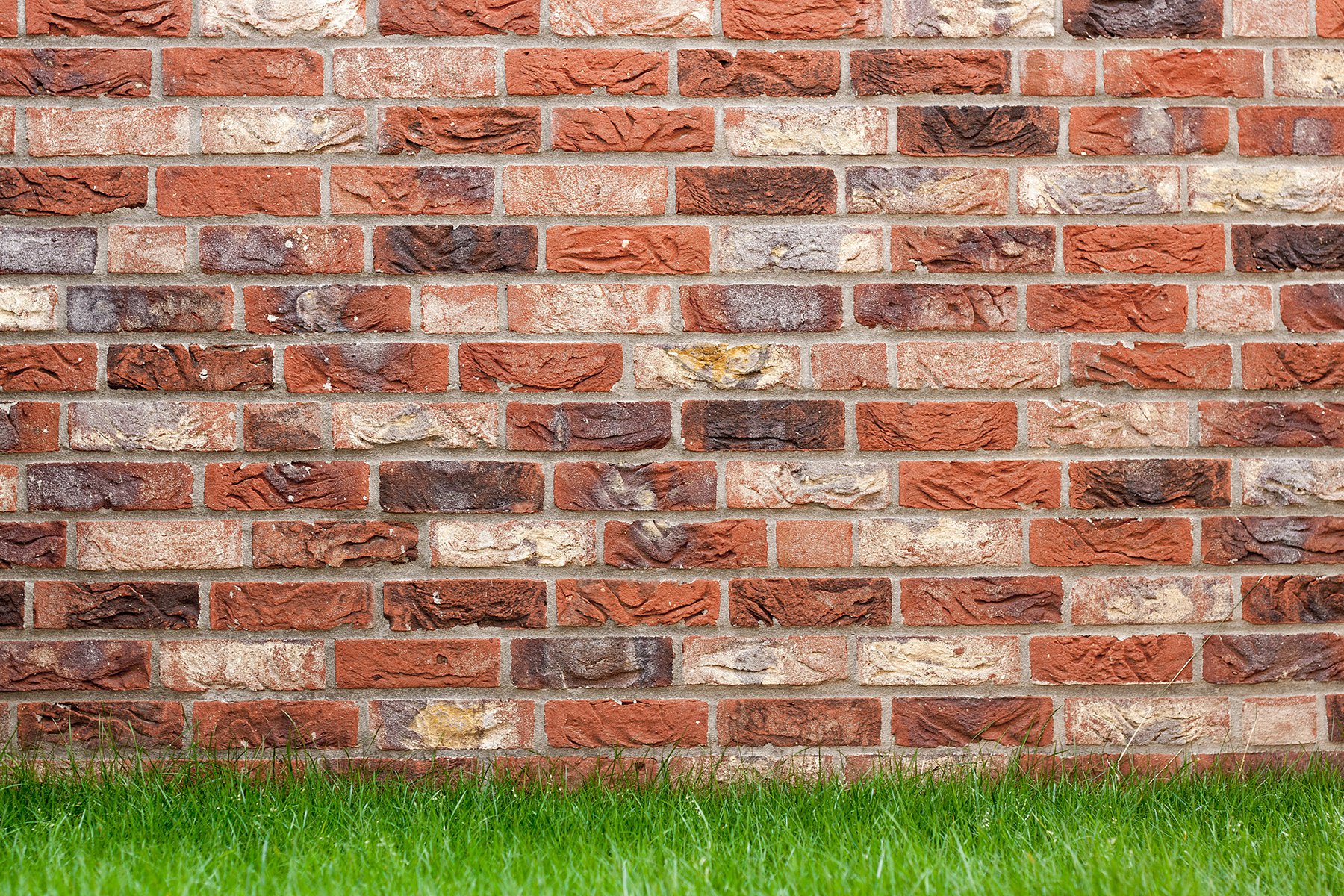The Ground Floor – Normal life
At this point I will assume that you have a solid and stable foundation. If you do not, don’t worry. Try to concentrate on the relationships inside any room that is unstable or weak and allow yourself to know what it is about that relationship that gives them that level of power over your life. As much as real life will allow you to avoid any substantial ‘building’ in this room. When you can say that it’s solid and stable, come back to this chapter and start the next stage.
The ground floor is all about ‘normal’ functioning and so can include all of the following:
- Some form of employment or attendance at school
- Paying bills or not ‘lending’ money that does not get paid back.
- Personal hygiene
- Getting your own place and looking after it
- Maintaining good relationships with work colleagues
- Shopping and nutrition
- Budgeting and saving
- Developing better communication skills
- Developing personal integrity
We define this floor as finished when we can say that we can;
“Function in society with family friends and colleagues
in a way that can be maintained and developed”
Normality
Before we go any further we need to take a look at possibly the most contentious word in this Chapter ‘normality’. What is it? Is it achievable? Is it even desirable? Well it is important that you know my answers to these questions. Normality is functioning in society without falling apart or spinning off into chaos. Your recovered self is going to live there! Yes and yes are my answers to the next two questions.
“But who can know what normality is”? I hear you say. As someone who has struggled with addiction I say you already know what normality is. You have spent so long being ‘abnormal’ you are actually an expert on normality! You may have spent years looking at ‘normal’ people. Maybe you rejected them as “too boring”. I know I did. The last thing I wanted to be was ‘normal’. But I was kidding myself. Secretly I wanted to be able to do all the things they were doing, but I couldn’t do them and when I tried I could not keep them up. Your ‘addicted self’ is always going to tell you that ‘normality is boring’ but your recovered self will know that normality does not hold back your creativity or your individuality.
The first thing we need to do is make a useful distinction between what is normal and what is conformity (I advise you to do this ‘distinction’ exercise a lot (ref)). You see what is average is not normal. It is simply a gauge to use.

My favourite story about conformity comes from the Second World War. The American Air Force put a tremendous amount of work into measuring all their pilots to find the average size height and weight of everyone that was going to fly the jets. They did this to help them to design the perfect seat cockpit and controls. After many accidents and problems a young scientist named Daniels realised that no one was actually ‘average’. These seats that should suit everyone because they were the average of everyone but were suitable for no one! They could not find one average person!
So normality is not conformity to the average. Rather it is your ability to flourish when you engage with, react and respond to society’s rules and guidelines. This ground floor is all about developing your ability to manage yourself in a ‘normal’ environment.
So average is just a useful term to compare yourself to. Not so you can be it (which no one is), just so that you can know yourself a little better and see that you are within certain parameters. Finally if you are still not sure about this ‘normal’ word, let me try one final question to see if I can tip you towards acceptance. As an ‘addicted self’ did you lead an abnormal life? Of course you did! Okay, I cheated, it’s two questions. How did you know it was abnormal? Good. Looks like we finally convinced you!
This is not easy. Everyone struggles with this at times. But the effort and commitment you put into this acceptance will pay dividends. It will promote better relationships and it will provide a platform for the next floor which is about pursuing your dreams. Most importantly it will develop your recovered self into maturity. It will help you grow up!
Building at the right speed
Your ground floor is built upon the foundation and conforms to the design of the rooms etc. It is at this point that one of our strongest ‘checks’ comes into play which is the idea of building speed. The reflective question is “are you building too fast or too slow”? Again this is part of developing your ‘recovered self’ and makes you responsible for your own thinking. Clearly building on an infirm foundation is going too fast but you are just as likely to be tempted to go too slow.
What does too slow look like?
There are lots of ways that you may be building too slow. I will look at two very typical ones now. Being too safe and being too small.
Being too safe
As an ‘addicted self’ you may have a history of chronic failure and this can often lead to ‘over building’. Ask yourself now “what size do you want your house”? If your ‘recovery house’ is going to be ‘normal sized’ and your aim is to live a normal life with a family and a job then there is no need to dig foundations for a skyscraper! When I see someone doing this I would be looking for someone who has not changed in a long time. I would look for ‘safe’ behaviour that is becoming ritualised. I would look for someone who was not challenging themselves to grow.
Being too small
Largely this type of thinking comes from a lack of distinction between your addicted self and your recovered self. I always ask my groups to put all ‘negative talk’ in past tense. This helps us to understand that things that were beyond us may not be beyond us now. Ask yourself now, if you have been living in a small tent and then move into a large house, would you still huddle down in a corner as if you were still in the tent?
When I see this type of thing it usually involves some level of shame or bullying in the parenting or the schoolyard. The addicted self is often carrying a legacy of ‘not believing in themselves’ that needs processing in some form of therapy.
What does too fast look like?
Again, for the sake of brevity I will look at two very typical ways of going too fast. There may be many others. Two very common ways I see this are ‘Building in the wrong order’ and ‘building badly’.
Building in the wrong order
This idea of ‘order’ is so obvious when we place our recovery back in the metaphor of a building. Imagine turning up at the building site when they are still in a muddy field pouring concrete and trying to put up curtains! There is a natural order to building your recovery in the same way as a natural order to building a house.
So the real purpose and function of the ground floor turns out to be a support for the first floor. It’s important that we look ahead and when we do, we see a first floor that is built upon this ground floor. As we start to look at the ‘higher’ level it will become clear that we cannot be up there without the support of the ground floor. So we might say that the function of the ground floor is to support the first floor. Let’s place that back into the context of recovery. The ability to live normally amongst others is the main support when we push forwards to higher goals. I can put it even simpler. There isn’t much point trying to open your own restaurant when you can’t hold down an assistant’s job at McDonalds!
Building badly
This is another way of saying “I’m frustrated because I should already have all this”. Or put another way “I’m not where I should be in life”. If this is your attitude and you have not fully accepted your condition and past you will probably go too fast and build badly.
If this is you then I advise you to stop building and consider talking more about your feelings of frustration at not being where you ‘should’ be. Let me use another example here to make this clear.
Adam
Adam is a typical addict and has been using for fifteen years. He has been ‘clean’ for six months. He is 30 years old. Before he got overwhelmed by his addiction to certain drugs he developed his own business and owned two homes, one of which he allowed his daughter to live in on a reduced rent. He drove an expensive new car and was heading to a very successful future. When I met him he was bitterly frustrated and resentful. He had lost his homes and his business. He was ‘clean’ but not recovered. He was in grave danger of attempting to build a ‘first floor’ before his ‘ground floor’. Picture now what a ‘first floor’ would look like built on a flimsy ground floor. Or worse still, levitating on nothing!
Adam had some amazing skills and professional ability. He had built a good Company but he lacked basic skills and did not have the humility to develop them because he was not willing to ‘process’ his frustrations, but was intent in ‘acting out’ of them. He wanted to skip this step and go straight back to where he had been. What he needed to understand was that the fifteen years of his addiction were fifteen years when everyone else was learning from their mistakes and growing from their pain and disappointment, he wasn’t.
That learning comes to a person over the next two to five years in a compressed form.
So, imagine coping with fifteen years of learning in two years. One of the main reasons why it is so hard to recover and why you need to talk, talk, talk, and then talk some more! I often say that if a person in the first two years of their recovery is not talking regularly about their ‘stuff’ (at least twice a week) they are definitely not keeping up with their changes.
Building materials
Building a house takes several different skills, such as brick laying, surveying, carpentry, plumbing and electrical, plastering and decorating as well as design skills and several different materials. Now is a good time to talk a bit more about resources.
Resources
When you try to do anything you need to think about resources. If you are building a house then you will need cement and bricks. Windows and doors. When it’s about your personal growth the resources are yours, not something you can go and buy.
When I tried to recover they told me I had to change. Great! But how do I do that? When I looked into my ‘bag of resources’ I saw nothing but defects! They said I need to get ‘more honest’. But the closest thing to that I had in my bag was ‘dishonesty’. So my early efforts at being more honest were me just trying to ‘lie better’. They said I need to be more ‘giving’ and I redoubled my efforts at controlling people better. They said I needed to communicate better but in my bag there was only bullying, shouting, manipulation, hostage taking and running away.
It is important to acknowledge the time it will take to develop these resources and that these are the things we build with. Again, these are ground floor skills and so must be developed before attempting first floor building.
Materials
One of the group sessions I enjoy the most is when we look at the idea of ‘materials’. This is what we will be using to build with and opening up this subject is one of the most fruitful and fascinating aspects of the groups work. I start by asking the group about ‘materials’. I often ask what materials they will use and typical responses are things like honesty, humility courage determination and education. In order to convince people they need to take these materials seriously I help them to make a connection between the quality of the materials and the overall quality of the build. I start talking about authenticity! Once you realise that your commitment to good principles will build somewhere that will not only stand the test of time but will be somewhere you want to live you will be on the right track.
It is useful to ask yourself about how you may have skimped on these materials in the past and how you are going to build with better materials in the future. When asking about materials I often find how rich the building metaphor is and the way it offers a clear picture of what is needed.
We can see that if the foundation is not solid and well planned the whole house will be shaky. Likewise we can easily see that poor quality materials in any aspect of the build will leave us with a poor construction. Knowing yourself and your past experience what materials do you feel are necessary and which have been the most expensive or rare. Cost is always a factor. When you are building your recovery, the materials you will use need to be of the best quality you can afford.
Communication – Direct and Indirect
Your ground floor is the part of the building where we learn how to engage with society in a ‘normal’ way. So that relationships such as those with work colleagues can be maintained without spinning off into chaos or degenerating into breakdown. This usually calls for better communication and so when looking at the quality of our building materials this is a big one and deserves some attention.
My general approach is to encourage a shift from ‘indirect’ to ‘direct’ communication. Direct communication is defined as looking the other person in the eye and telling them the truth. Indirect communication is everything else. This idea follows the principle from communication theory that says that ‘everything is communication’.
I want you to try an exercise now that I often use with my groups. Once you understand the nature of this exercise you can apply it in all your relationships. This can be work colleagues partners or family. It can be something really simple like a tone of voice you often have or a ‘body language’ component. It could be a behavioural element like ‘shutting the cupboard door a little too loudly’, ‘rolling your eyes’, or ‘tutting’. It could be a facial expression or the phone call you didn’t make. The question I want you to think about is “if this thing you do could speak, what would it be saying to them”? When you see what you are trying to say, first of all accept that you have been ‘saying something without facing the consequences of saying it’. Now take what you have found and follow the process below.
1 Tell yourself what you really wanted to say when you communicated indirectly (even including the swearing).
2 Take the communication through the three filters of politeness, assertiveness and authenticity.
3 Decide whether to communicate directly.
So let’s take this process one step at a time.
Step 1 We ‘translate’ our act of communication into a simple sentence. Now because we are never going to say this to anyone else we can start to be honest with ourselves but because we are new to this we need to realise that this is not easy, we need to concentrate and practice to make sure that we have got to the real meaning.
Step 2 is where we take our translation and filter out the things that make it difficult for us to say. We take out the offensiveness, next we take out the aggression, and finally we take out the falseness that can come in as part of the first two filters. So firstly we simply make it a polite message, by removing this we make our communication easier to hear. Next we make it assertive, it is important to understand that in communication terms telling someone to do something is ‘aggressive’, so this filter makes us the agent of change not the other. I will give examples of this at the end. The last filter is to really make sure that in using the first two filters we have not lost the main idea in the communication, in other words we keep it real.
Step 3 is about choosing whether to tell the person directly or not. Remember telling them is not always the best idea. We should take time to practice and get better at translation. Just understanding ourselves better and learning what we are saying indirectly will be a huge health promoting activity.
Let me finish now with a couple of examples that should make this process more clear. You might have something like “stop BLEEP bothering me! You are always BLEEP going on at me”. So we have been honest and let ourselves know what it is we wanted them to know. Next we filter it. First we make it more polite and get something like “leave me alone, you never stop criticising me”. Next we make it assertive which takes it back to the ‘I’ position and we get something like “when you go on at me like that I feel got at and not good enough”. Finally we make sure it is authentic and we end up with “When you go on at me like that I don’t feel good enough and I want to ask you to leave me alone but I don’t know how to say it”.
Finally you need to decide if it is time to say this directly to the person in question, or if you should just reflect on this disclosure ourselves.
Thanks for taking the time to read this, and I hope it helped you to improve your self-knowledge. If you practice you will get better and it will tell you a lot about yourself and your relationships. This is the principle that we are taking into account at this stage
‘Psychological processes always work their way out’
As you build this floor you need to reflect on your changes in motivation and meaning. Does the room have the same aims and meaning for you at this stage as it did when planning or in the foundation stage?
Some ground floor questions to meditate on
DESIGN
Are you using every room as you designed it? (How you are spending your time and who with)?
Are you still happy with your original design? (Are you changing your ideas)?
RELATIONSHIPS
Which relationships are in need of some attention (how do you need to change)?
Which boundaries have slipped (what do you need to change)?
Are you checking your foundation in each room (Is this pace safe for you)?
COMMUNICATION
How are you changing your communication style?
What is the biggest block to your communicating well?
Are you developing a more direct communication style?
Which rooms am I communicating best in?
RESPONSIBILITY
In which way do you need to develop your sense of responsibility in relationships?
How well are you using your most valuable asset (your past) to develop your communication and relationships?
3 Materials – Recovery building materials are things like honesty, humility, courage. It is important to check the quality of these materials.
4 Structure – As part of design and build we should also check that all the rooms needed in this recovery are included in the structure, including relationship, family, career and hobbies etc. Always remembering the room for the self!
Also included at this level are two important features, the garden (boundaries) and the gate/front door. The fence is used to look at boundaries and we remind participants that every boundary is particular to a relationship, and every boundary is movable. The gate and the fence represent very important parts of our metaphor and it is worth taking a short detour to explain the way we use these further.
Exits – the gate
In order to explain this I am going to have to mention brain chemistry! There, I said it. But don’t worry, I am not going into any detail, just to say that addicts have a particular form of brain chemistry that allows them to have ‘exits’. It is important when you work with addicts that you understand this and that you help the addict understand that they are open to all kinds of shame and low self worth because they expect to react like other people. I explain that they have a different brain which allows you to ‘exit’. Even if someone drank like you or take drugs like you they would not get the same effect that you get as an addict.
If you think of your (internal) life as a room then an ‘exit’ is just that, it is a door with a lit sign above it marked ‘EXIT’. Normal brains do not have an exit door, people with normal brains remain themselves even when drunk or high. Of course they can still be harmed by these things and will show effects of drugs etc but will effectively become a more drunken version of themselves. The addict however appears to metamorphose into a completely different person when drunk or high. As an addict you have an option of not being you for a while if your ‘room’ becomes too uncomfortable with resentment or fear piling up in the corner. This is taken to extremes when you ‘black out’. This can be a calm decision based on something like boredom or it can be a panicky decision based on fear.
So what happens? It seems like you have the perfect answer! Just take a holiday from being you every time difficulties come! Unfortunately this does not work long term and eventually the cure becomes worse than the disease. Like any medication there are always side effects. By the time addicts get into this state they are usually so addicted that it seems impossible to stop. There is so much habituated behaviour going on.
Boundaries – the fence
One of the strongest and most important parts of our model is the idea of boundaries. A boundary is described exactly the same as a property fence and as we all know it is an important part of everyone’s lives. As part of this course I use boundaries in their most basic form, incorporating only two ideas
1 That every boundary is particular to another person
2 That every boundary is either too close to the house or too far away
If the boundary is too close we say that we are ‘mowing someone else’s lawn’. If it is too far away we say that “they are mowing our lawn”! In other words we are taking responsibility for something that is not ours or we are expecting someone else to be responsible for something that we should be attending to. Either way these are
Some foundation level questions to use in group
DESIGN
Is this design truly yours or has someone else designed your building?
Are you building in the right area?
MATERIALS
Which materials do you value most?
Which materials have you tried to skimp on?
SOLIDITY
Have you included all the rooms you will need in your plan?
Which rooms are you most threatened in?
Have you planned your rooms correctly?
Are my boundaries in place?
BOUNDARIES
Do you have a history of building your fence too close or too far away from the house?
In which relationships do the boundaries need to be adjusted?
1 Is this the best place to build?
2 Are you building too fast, or too slow?
3 What rooms will you have in your house?
4 Are you designing your house or someone else?
5 What building materials will you use?
6 Do you know your boundary lines?
7 How solid is your foundation?
8 Which rooms are not solid?
9 How secure is your gate?





0 Comments